I like to celebrate with movement, and every pass around the sun, I figure out how to celebrate with my body. This year, turning 41, I decided to walk 41 miles over two days and to explore the amazing small-scale food producers in my area, including community gardens and food banks. I documented my two-day walk on Experience Life’s Instagram account, and I also dedicated my walk to, and asked followers to support, an urban community garden that’s facing threat of eviction.
I’ve always done my best thinking and am at my most creative while walking (I’m not special in this way; research shows this is a common phenomenon.) While I knew I would learn about the local food scene on my trek, I was surprised at how many ideas sparked and connected along the way. (Really, I’m not sure anyone could move their own bodies for 41 miles without learning a ton in the process.) I learned more about everything from fitness to community to nutritious food to the plants and animals themselves. Below is some of what I gathered on my #willmoveforfood trek; if you followed the walk and were inspired to do your own version of #willmoveforfood, I’d love to hear about it!
Here are 41 things I learned on my 41-mile walk:
- Maps are fun to use (and reading them is becoming a lost art). When I was 8, I navigated for my dad all the time, but with the introduction of GPS, I’d forgotten how to pay attention to landmarks and my relationship with them, in the way we need to when a digital navigator isn’t paying attention for us.
- And, the “walk route” feature on online maps can be interpretive. I mean, would we call this walkable? Really?
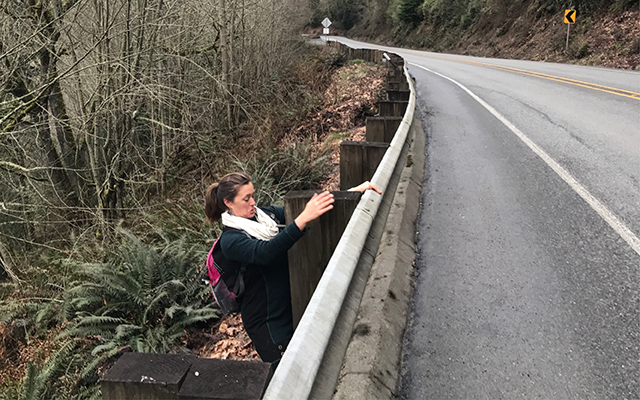
- Traversing the land (what we call “walking”) isn’t always this upright, one-foot-at-a-time phenomenon. If someone hasn’t done the work to level ground, raze forests, and build bridges, it involves clambering, climbing, and high-stepping over stuff.
- Comfort and feeling great are not the same thing. The first day, I walked eight hours, most of it in the cold rain. Was I comfortable? Not really. But something doesn’t have to be discomfort-free to make you feel good. I was outside, engaged in my community, using my arms and legs to get me somewhere. Did I feel great? Absolutely.
- I didn’t need a ton of snacks or water or special gear. Granted, I might have been more comfortable with additional items (like an umbrella or extra gloves), but they weren’t necessary to complete the trek.
- Our perception that we need the portable equivalent of a full closet and a refrigerator with us at all times might prevent us from getting out more often and going farther when we do. You want to be safe, of course, but I’ve found I’m often mixing up trying to offset discomfort with doing the physical training necessary to move my body long and far. My regular practices of cold training, walking as transportation, minimal footwear use, and morning fasting (not eating as soon as I wake up) paid off on this walk.
- Walking over texture and terrain, while inconvenient for shorter distances, is what allows for long ones. We tend to seek out the smooth paths because we can pay less attention and it allows us to go faster, but when it comes to long hauls, the more I got off the road (hard, flat, repetitive), the better I felt. Those lumps and bumps (a.k.a. natural terrain) that seem inconvenient when you’re trying to race through a couple of miles are actually features that allow for widespread body use and recovery.
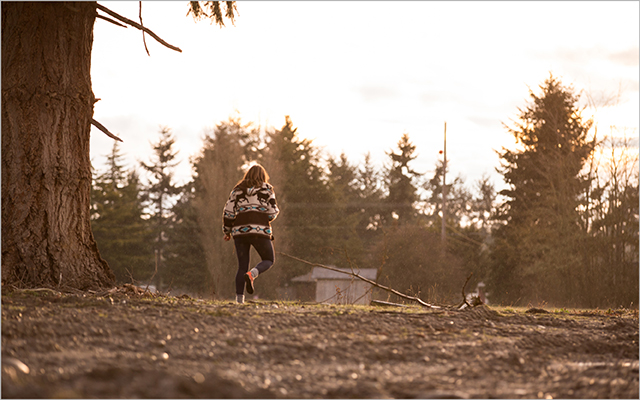
- Having a walking buddy is awesome. Whether you’re looking for accountability or just enjoy company, a walking buddy gets the job done.
- Having a group of walking buddies is even better. I learned from my farm tour that crop variance is key as plants all support each other, the soil, and the farmer uniquely. Similarly, a group of walking buddies will be available at different times, offer knowledge about different routes, have different speeds, and talk about different things. Variety in walking pals is key to going longer, farther, or simply differently.
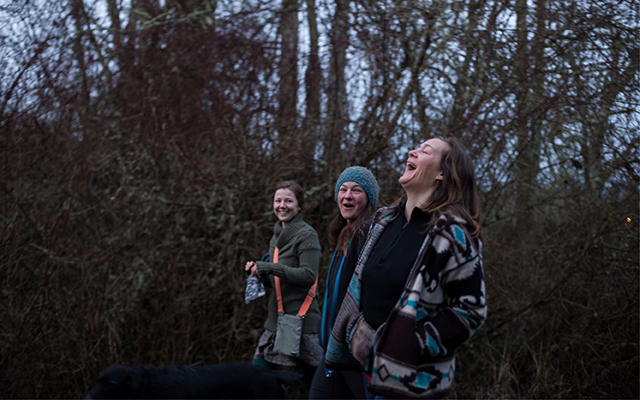
- There is no shoe better for a long walk than strong and supple feet. I’ve done quite a few long treks and I’ve learned that while footwear choice is absolutely crucial (read my breakdown on footwear from my previous trek), your shoes are only as supportive as the muscles in your feet.
- No, really: When it comes to physical training, you don’t want to neglect your feet. You’ve figured out how to build up walking endurance and which hip stretches and knee strengtheners are necessary, but do not forget your feet. After all, 25 percent of the muscles in your body reside from the ankle down. Doesn’t matter how strong the rest of you is; when your feet are done, they will throw the rest of you under the bus.
- Plants need movement, air, and sunlight — and so do we. I actually already knew this, but what I didn’t know — what I hadn’t experienced — was the way a farmer’s or forager’s body is moved while they’re working for the plants. (I keep thinking about the super low doorway into a greenhouse I visited, which leads to zillions of squats a day for those farmers!)
- While small-scale farming might come across as “small town“ or “quaint” or a “throwback,” it’s critical work. Humans need food, and when it comes to sustainability and even perhaps quality, the closer we source it, the better.
- People are drawn to farming and food production for different reasons. They come from permaculture perspectives, or it’s their way of saving the planet or honoring the victory garden of their grandparents. I met people who gave up corporate jobs to try a different lifestyle.
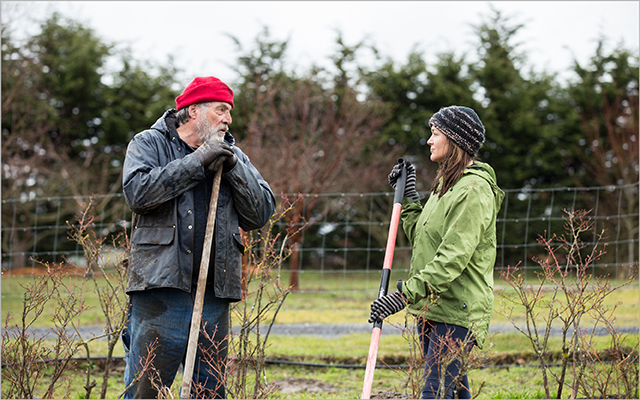
- Farming attracts a variety of people. These small-scale producers are all ages and backgrounds. Some were drawn to farming because their kids were out of the house and they could retire and tinker in the soil and some because they have small kids and wanted them to have the ability to grow things.
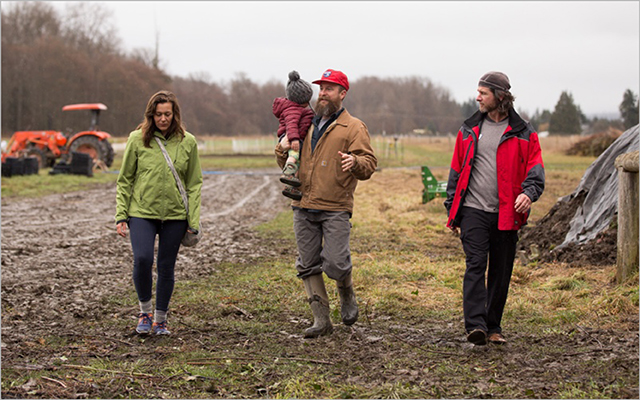
- Humans have probably always, and still are, tinkering with their food. They are not only tinkering with crops and soil; they’re also just stoked to tinker.
- Farmers aren’t only thinking fruits, veggies, and meats. One local farm (Nash’s Organic Produce) was also working to figure out what oil-bearing crops will grow in this area, so they can eventually offer local cooking oil.
- Hauling crates in and out of a truck is actually the perfect “rest-up” activity when you’re walking all day. While we do need recovery, we can easily rest the muscles used for one activity by doing an activity that uses the body differently.
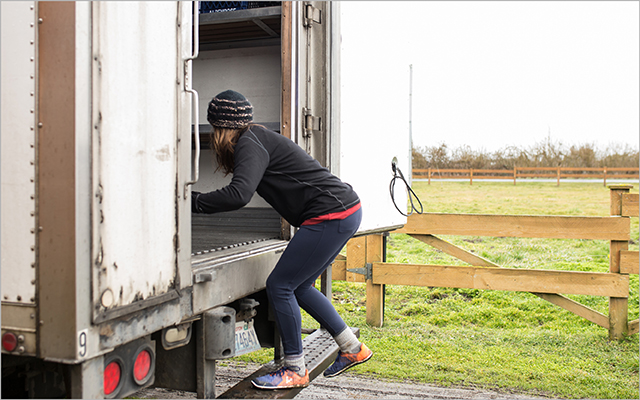
- Many of us live in places teeming with wild food, but we no longer know what’s edible, how to get it, or what to do with it. A quick online research session should inform you of the indigenous peoples of your area, what they ate historically or still currently eat, books to identify these plants and animals, and if there are local courses on how to build those skills.

- Everywhere is walking distance. Perception is everything. Even I, the walking queen, had not filed the moccasin shop I visit twice a year for shoes as “within walking distance,” yet, when I stumbled upon it on foot (24 miles into my walk), it immediately shifted. (My mind, I mean; the building stayed put.) The more you use your body to get where and what you need, the more you will change your mind about what’s possible, or what “is.”
- When we say “walking distance,” we often mean “close enough to walk to easily and without challenge.” This is important to know because one answer to “How can I move more?” and “How can I use less fossil fuel?” could easily be “walk more” — but to make that happen, we’re going to have to change how we qualify something as walking distance.
- Fresh sprouts taste unbelievably good.

- There are lots of ways to support your local food bank. Donating nutrient-dense, shelf-stable foods like nut butters are helpful, but also consider cash donations, as food banks have relationships with grocers and can often stretch dollars into more food. You can also find and join your local gleaners — groups of volunteers that work to harvest neglected or unused produce trees and bushes for food banks. Start gleaning, and log your exercise, community, and volunteering hours at the same time!
- You can’t walk 41 miles at your regular walking pace. Slowing down on purpose (vs. being too fatigued to walk faster) is key.
- It’s beneficial to practice walking at different rates. One simple and community-minded way to do this is by walking with people of different ages and abilities.
- There is no one-size-fits-all community and so no one-size-fits-all community garden. People come with all sorts of abilities and interests and so do community gardens: Rural, urban, raised beds, full of flowers or edibles-only. If you can imagine what it would look like and how it would serve your community, a community garden can be created to match.
- I must be half-plant, half-human. Why? Because the bright, sparkling sunshine on my birthday, the second day of my walk, the day after I walked all day in cold rain, gave me WAY more energy than breakfast ever has.
- Social media can really connect people. Posting and tagging a farm (“I’m coming for you, Finn River Cidery”) led them to view my online journey as I was doing it. When I arrived, one ciderian handed me a glass of black currant cider and the owner came out the cidery to connect in person.
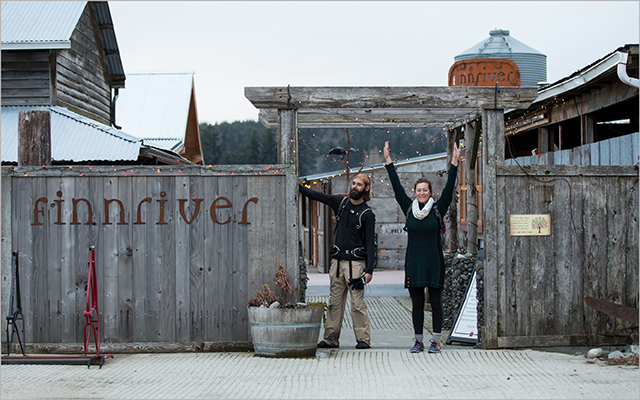
- Organic, local cider tastes really, really, really good after walking 45 miles over two days.
- Using social media can have a ripple effect. I did a walk, and shared it with others — both the farmers and people I met after the fact — and also with readers I may never meet. These folks then posted some of the ways they moved for food that day, which engaged people my postings never reached.
- One ripple was this woman. She decided to donate her coffee-habit money (she’s trying to quit) to the Ron Finley project after following the #willmoveforfood journey.
- Change can happen on the smallest scale and still be impactful.
- There are likely many things we can’t figure out how to do right away, but we can usually do something. Like learn something about yourself, about your landscape, and about the others that share it with you. And also, to walk more.
- The Internet is not the world. Ever notice how many more times you say “I read on Facebook” vs. “I read on the community board” (or read a tweet vs. hearing one)? Although it feels like the Internet is the bulk of our world these days, there are experiences only available away from the computer.
- There are things you’ve never seen in your own community. I found a store that specialized in “local food production,” a tunnel under a freeway that allowed for longer, safer walking, and two small farms I didn’t know were there.
- There are people doing amazing things in your community that you’ve never met and that you don’t know anything about. In my town, there’s a guy making his own syrup from sap (and we don’t have any local sugar-maple trees).
- You can make syrups from trees other than a sugar maple.
- I had to walk 20 miles to find out about an event in my own backyard. I found a posting on a community board over 20 miles from my house announcing a wild-food harvesting class in a nature area less than a five-minute walk from my house.
- Walking makes me think deep thoughts. That, or fatigue. I’m not sure which.
- It’s possible to sleep through your own amazing birthday party at a local artisanal cidery full of people you love. To just . . . sleep through it.
- I’m not the greatest at counting.
*Actual walk ended up being around 45 miles. See number 41.
To read more about Katy Bowman’s inspiration for her 41-mile walk, see #WillMoveForFood.
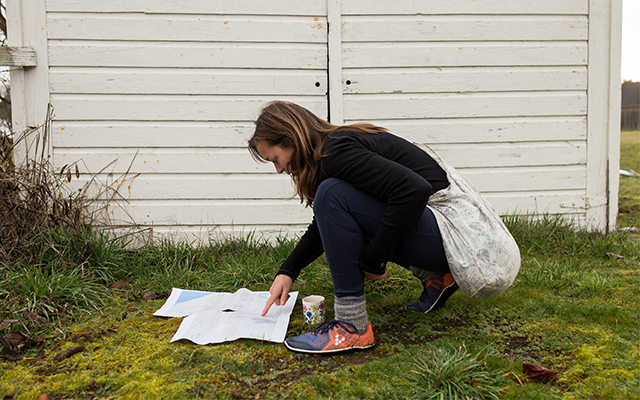

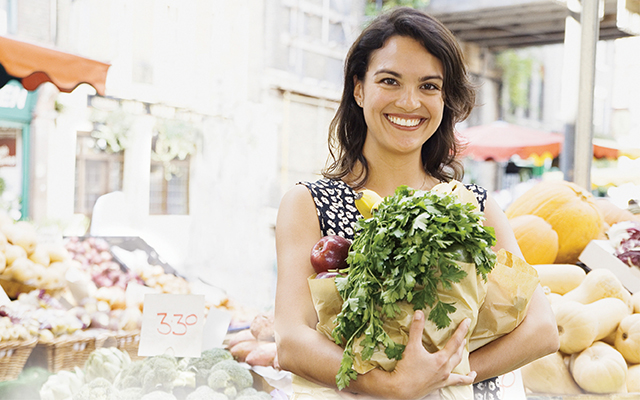
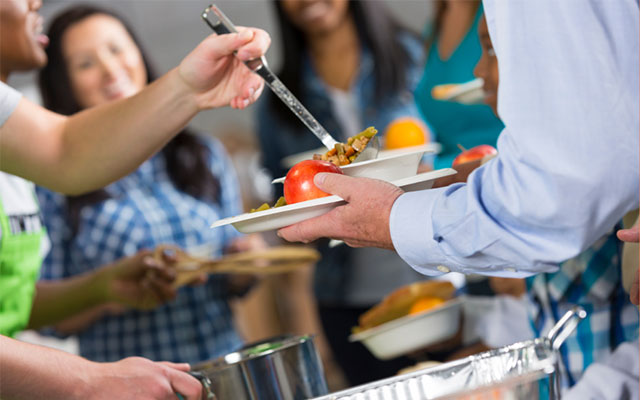
This Post Has 0 Comments